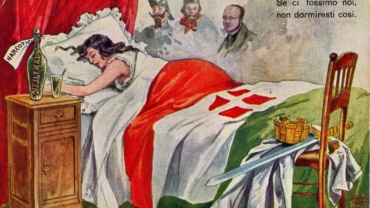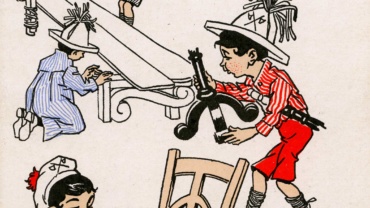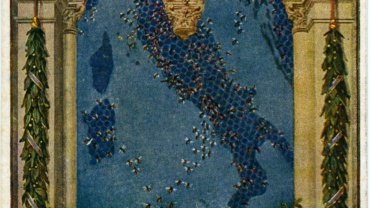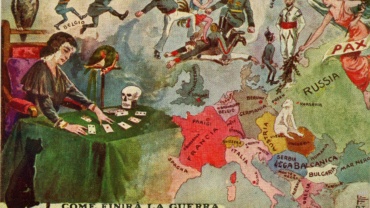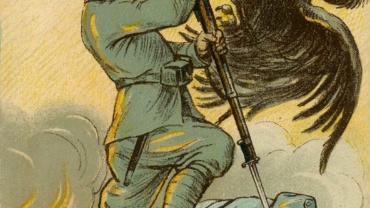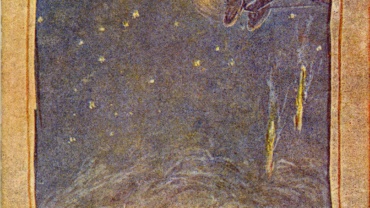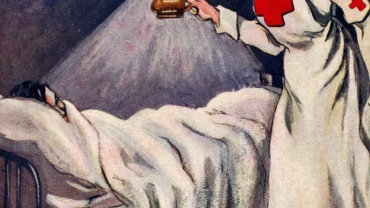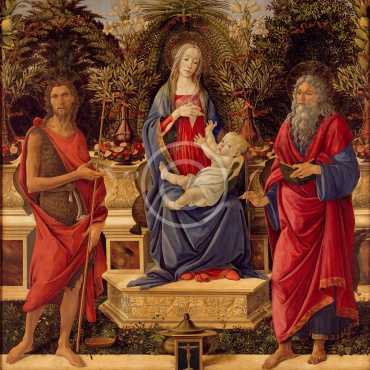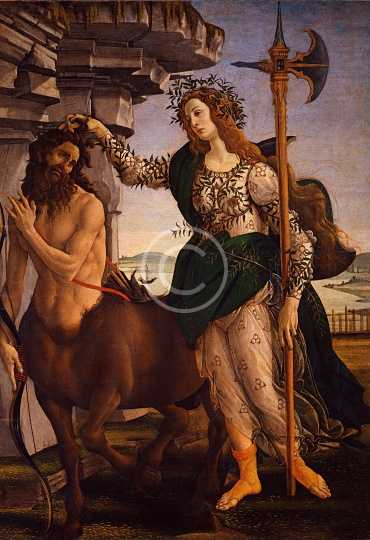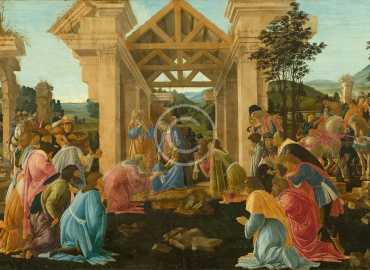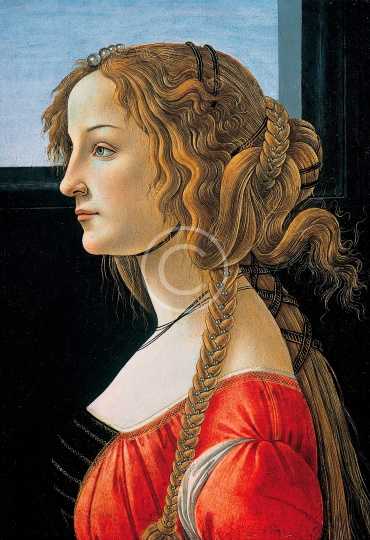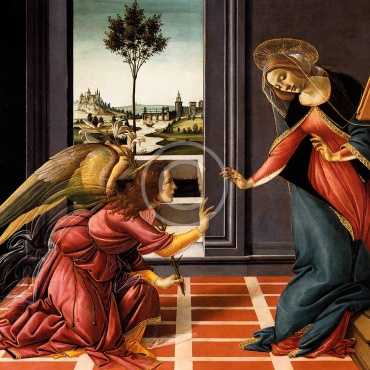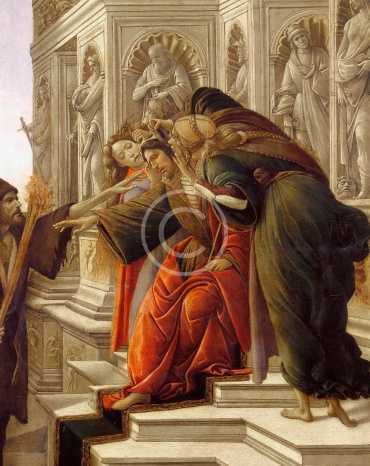The Baldini Collection
The collection, born on the initiative of Enrico Baldini (1898 – 1977), an infantryman maimed and decorated in the Great War, and then continued by his nephew Eraldo Baldini who devoted decades of research and acquisitions on the international markets, consists of 2,905 Italian propaganda postcards from the First World War published from the period of neutrality to the immediate post-war period, all in excellent condition, partly new and partly travelled.
Acquired in 2011 with the help of the Regional Institute for Cultural Heritage, the Baldini Collection today represents a valuable interpretative filter to understand the public discourse of the government apparatus and of the Army General Staff, who were committed first in creating consensus towards participation in the conflict and mass conscription, then in supporting the efforts required to the country with the militarisation of all human, intellectual and economic resources. It was indeed these images that initially conveyed the idea of national concord framing the young men in disciplined ranks, and that later created new myths such as the victory at hand, the white war in the mountains or the Red Cross nurses.
It was the largest patriotic propaganda campaign experienced by our nation at the beginning of the 20th century, entrusted with an enormous quantity of iconographic, exhortatory and reassuring messages that invaded the public and private spaces of all social classes. These postcards were produced in industrial quantities by the state, patriotic bodies, pro-war committees and private companies.
They were then freely offered to conscripts, who could thus communicate with their families free of charge, or they were distributed as gadgets on festive occasions throughout all squares of Italy. In a country that was still half illiterate, the image drawn on the postcard, effective and immediate, supported most of the messages that the Amry General Staff wanted to spread. Famous names in journalism, intellectuals, graphic designers and artists were engaged in supporting this great opinion campaign.
Monographic sections of the collection are dedicated to the most prestigious illustrators of the time: Bertiglia, Brunelleschi, Codognato, Golia (Enrico Colmo), Mastroianni, Rizzi, Mauzan, Mazzoni, Mussino, Rubino, Sacchetti, Zandrino, Cascella, Raemaekers (Italian ed.), while in the subject sections appear postcards illustrated by Busi, Nanni, Bologna, Rota, Montedoro, Meschini, etc.
What gives added value to the collection, which is one of the largest in Italy, is the fact that it contains series almost always complete of issues. This is a vast, rare and precious material that can be used for thematic exhibitions and for study.
Sandro Botticelli
He belonged to the Florentine School under the patronage of Lorenzo de' Medici, a movement that Giorgio Vasari would characterize less than a hundred years later in his Vita of Botticelli as a "golden age".
Botticelli’s posthumous reputation suffered until the late 19th century; since then, his work has been seen to represent the linear grace of Early Renaissance painting.
As well as the small number of mythological subjects which are his best-known works today, he painted a wide range of religious subjects and also some portraits. He and his workshop were especially known for their Madonna and Childs, many in the round tondo shape.
Botticelli’s best-known works are The Birth of Venus and Primavera, both in the Uffizi in Florence. He lived all his life in the same neighbourhood of Florence.
Only one of his paintings is dated, though others can be dated from other records with varying degrees of certainty, and the development of his style traced with confidence. He was an independent master for all the 1470s, growing in mastery and reputation, and the 1480s were his most successful decade, when all his large mythological paintings and many of his best Madonnas were done.
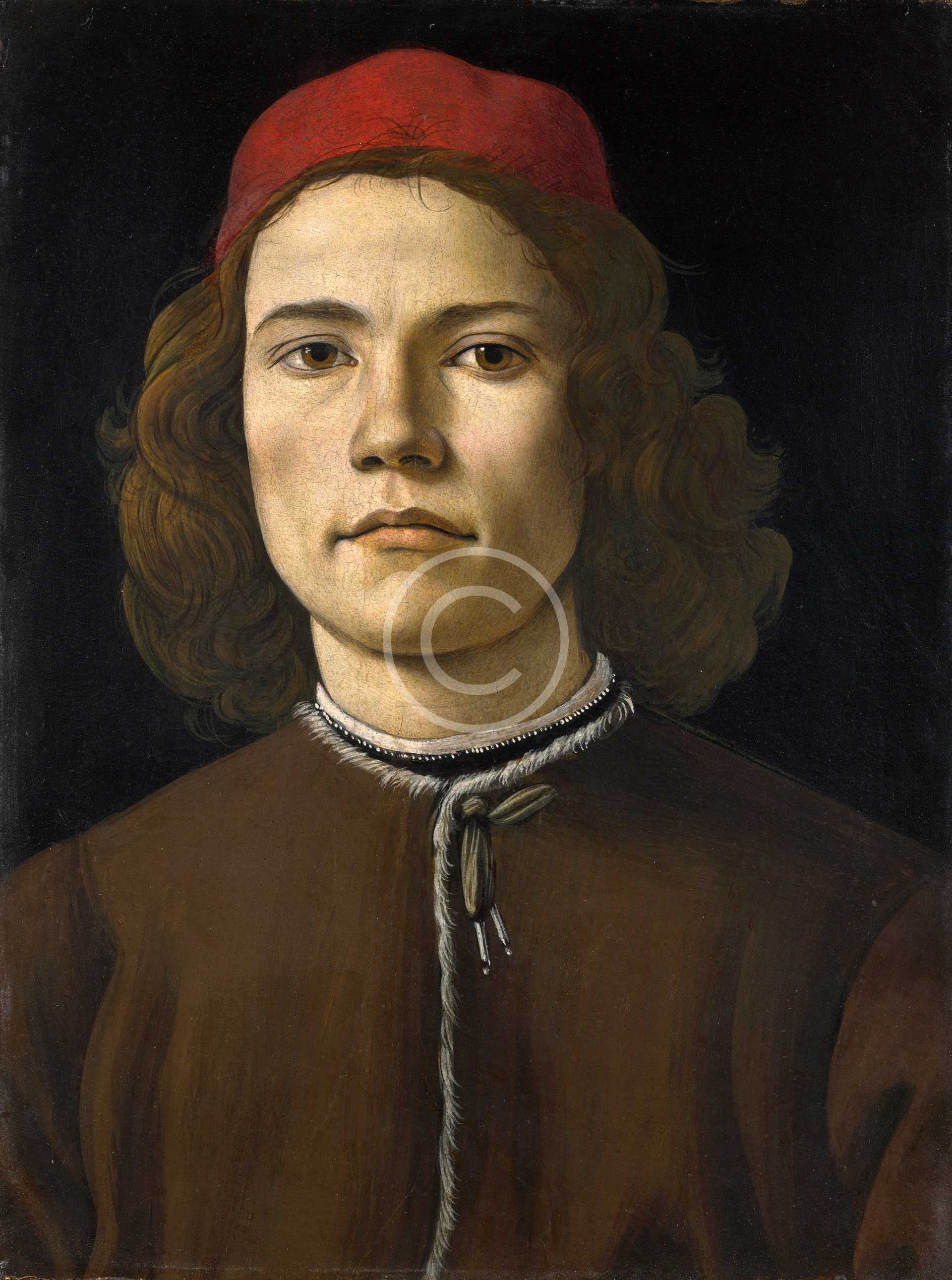
The Exhibition
This long-term exhibition gives us an opportunity to discover the world of Sandro Botticelli's paintings in different periods of his life.
The exhibition presents:
- Most of the first editions of Sandro’s works
- Letters, diaries, sketches and drawings displayed for the first time
- 3-D installations
- 5 audiovisual pieces and a soundtrack created exclusively for the exhibition
Collection
Video
Gallery
Faq
Aenean massa. Cum sociis natoque penatibus et magnis dis parturient montes, nascetur ridiculus mus. Donec quam felis Cum sociis natoque penatibus et magnis dis parturient.
Aenean massa. Cum sociis natoque penatibus et magnis dis parturient montes, nascetur ridiculus mus. Donec quam felis Cum sociis natoque penatibus et magnis dis parturient.
Aenean massa. Cum sociis natoque penatibus et magnis dis parturient montes, nascetur ridiculus mus. Donec quam felis Cum sociis natoque penatibus et magnis dis parturient.
Aenean massa. Cum sociis natoque penatibus et magnis dis parturient montes, nascetur ridiculus mus. Donec quam felis Cum sociis natoque penatibus et magnis dis parturient.
Aenean massa. Cum sociis natoque penatibus et magnis dis parturient montes, nascetur ridiculus mus. Donec quam felis Cum sociis natoque penatibus et magnis dis parturient.
Aenean massa. Cum sociis natoque penatibus et magnis dis parturient montes, nascetur ridiculus mus. Donec quam felis Cum sociis natoque penatibus et magnis dis parturient.
Newsletter
Receive e-mail updates on our exhibitions, events, and more



